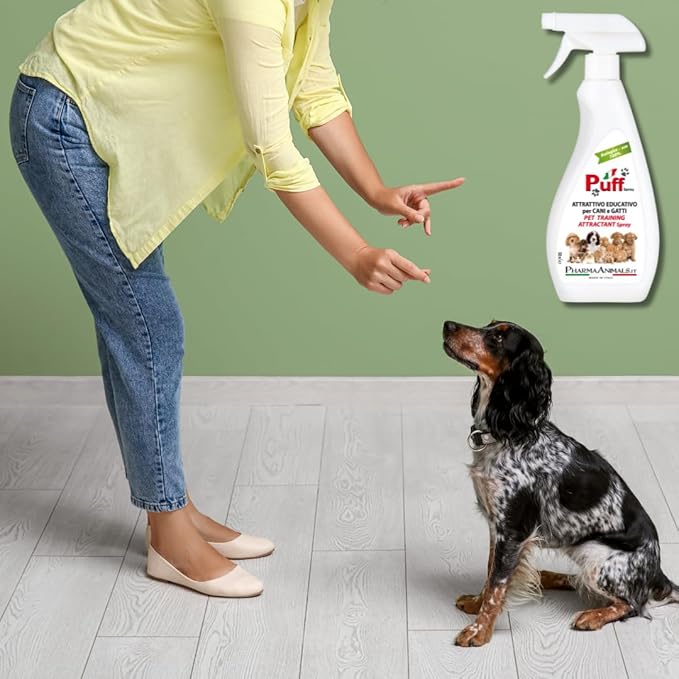Disabituants for dogs and cats are useful tools for correcting undesirable behaviors in our pets. Whether it’s to prevent them from chewing on objects, urinating in unwanted places, or other annoying habits, a disabituant can be a valuable ally. In this guide, we’ll explore how this product works, how to use it properly, and what to consider when choosing the right disabituant.
How Does the Disabituant Work?
The basic principle of a disabituant for pets is the use of unpleasant smells to discourage certain behaviors. The odors in these products are especially unpleasant for the sensitive olfactory system of dogs and cats but are practically imperceptible to humans. In this way, the animal associates the undesirable behavior with a negative experience, gradually learning to avoid it over time.
How to Use the Disabituant
- Identify the Behavior to Correct: Before applying a disabituant, it is essential to identify the specific behavior you want to correct, such as chewing objects, urinating outside the litter box, or scratching furniture.
- Choose the Right Product: There are various types of disabituants, including sprays, gels, and diffusers. The choice depends on the behavior you wish to correct and your pet’s personality. For example, a spray may be useful for specific objects, while a diffuser could be ideal for eliminating behaviors related to larger areas, like your entire home.
- Proper Application: Always follow the instructions on the product’s packaging for proper application. Typically, you are advised to spray or apply the disabituant directly onto the area or objects where your pet has exhibited the undesirable behavior.
- Consistency in Use: Consistency is key for successful results. Use the disabituant every time the animal repeats the undesired behavior. This way, they will gradually associate the behavior with the unpleasant smell and start avoiding it.
What to Consider When Choosing a Disabituant
When choosing a disabituant for your dog or cat, consider the following factors:
- Animal Sensitivity: Every animal reacts differently to smells. Some may respond better to certain types of disabituants, while others may be more sensitive. Experiment with different products to find the one that works best for your pet.
- Safety: Ensure that the disabituant is safe for use on your pets and on your home’s surfaces. There are natural, non-toxic disabituants available that may be a better choice for more sensitive animals.
- Type of Behavior: The type of behavior you want to correct will affect the kind of disabituant to use. For instance, if your cat tends to scratch furniture, a spray might be ideal. If your dog is urinating inside, a gel or diffuser might be more suitable.
Conclusion
A disabituant, when used correctly and consistently, can be an effective tool for training your dog or cat. However, it’s important not to rely solely on the disabituant; combine its use with positive reinforcement, such as treats and affection, when your pet exhibits the desired behavior. Always consult your veterinarian for personalized advice and to choose the right disabituant for your furry friend.

Hi there to every one, for the reason that I am genuinely
keen of reading this weblog’s post to be updated on a regular basis.
It includes pleasant stuff.
Thanks a lot!